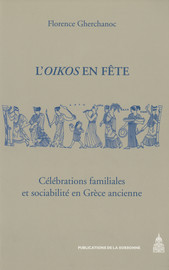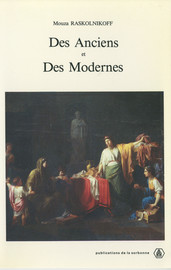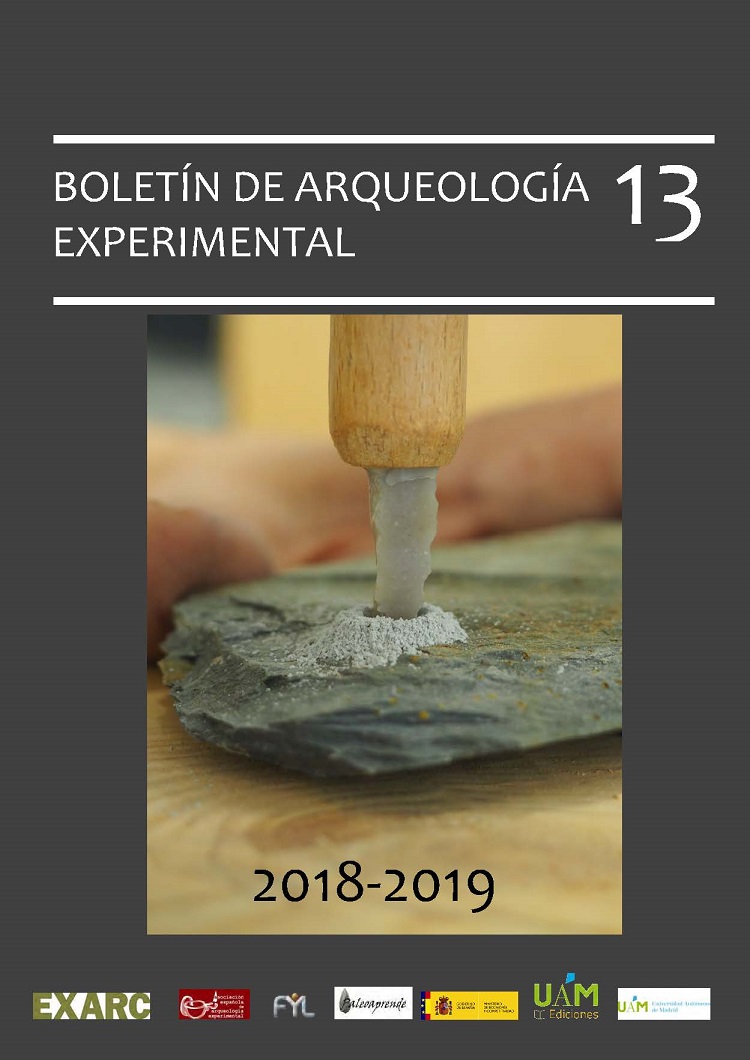…Comment définir la famille en Grèce ancienne ? Qui invite- t-on chez soi ? Suivant quelles modalités ? Pourquoi ? Longtemps, les historiens ont exclu la famille du champ d'étude de la sociabilité, considérant qu'elle relevait de la sphère privée. L'analyse de célébrations ritualisées et normées, le plus souvent festives (mariage, naissance, décès ; sacrifices, banquets, processions, danses, chants), entre parents, amis et voisins, autrement dit entre familiers (oikeioi), ainsi que des disc...
Lire la suiteNote de l’éditeur
Ouvrage publié avec le concours du Conseil scientifique de l'université Paris 1 Panthéon-Sorbonne et de l'unité ANHIMA (UMR 8210 Anthropologie et histoire des mondes antiques).
- Éditeur : Éditions de la Sorbonne
- Collection : Histoire ancienne et médiévale | 111
- Lieu d’édition : Paris
- Année d’édition : 2012
- Publication sur OpenEdition Books : 29 juillet 2019
- EAN (Édition imprimée) : 9782859446901
- EAN électronique : 9791035101657
- DOI : 10.4000/books.psorbonne.30007
- Nombre de pages : 265 p.
Wednesday, July 31, 2019
L'Oïkos en fête: Célébrations familiales et sociabilité en Grèce ancienne
L'Oïkos en fête: Célébrations familiales et sociabilité en Grèce ancienne
Attic Inscriptions Online YouTube Channel
Attic Inscriptions Online YouTube Channel
nscriptions are the most important documentary source for the history of Ancient Athens and the surrounding region, Attica. This channel contains educational videos about these inscriptions. It is linked to the website https://www.atticinscriptions.com
 3:42 Now playing
3:42 Now playingMonument in British Museum honouring Athenian ephebes
53 views1 month ago 55:15 Now playing
55:15 Now playingThree Attic inscriptions in CGRN in the British Museum
124 views10 months ago 13:36 Now playing
13:36 Now playingAthenian decrees in the Fitzwilliam Museum, Cambridge (AIUK 3)
266 views10 months ago 7:22 Now playing
7:22 Now playingAccounts of the sanctuary of Apollo on Delos in the Fitzwilliam Museum, Cambridge (AIUK 3)
130 views10 months ago 29:02 Now playing
29:02 Now playingInscribed Athenian funerary monuments in the Fitzwilliam Museum, Cambridge (AIUK 3)
216 views10 months agoAthenian inscription in Petworth House (AIUK 1)
991 views1 year ago
Des Anciens et des Modernes
Des Anciens et des Modernes
…ExtraitLe principal thème de la recherche soviétique en histoire ancienne est, depuis 1960, l’esclavage dans la société antique. En effet, le plan septennal adopté en 1960 par l’institut d’histoire de l’Académie des Sciences d’URSS prévoyait une vaste histoire de l’esclavage conçue comme « une série de monographies scientifiques (…) donnant dans leur ensemble (…) un tableau complet (…) de l’apparition, du développement et de la destruction du mode de production esclavagiste dans le monde antique ...
Lire la suiteNote de l’éditeur
Ouvrage publié avec le concours du C.N.R.S.
- Éditeur : Éditions de la Sorbonne
- Collection : Histoire ancienne et médiévale | 23
- Lieu d’édition : Paris
- Année d’édition : 1990
- Publication sur OpenEdition Books : 29 juillet 2019
- EAN (Édition imprimée) : 9782859441944
- EAN électronique : 9791035102401
- DOI : 10.4000/books.psorbonne.25376
- Nombre de pages : [VIII]-193 p.
- Sommaire
- Présentation
- Auteur(s)
Claude NicoletAvant-proposLes recherches soviétiques sur l’esclavage antique depuis 1965Examen de l'ouvrage de E. M. Štaerman et Μ. K. Trofimova, Les rapports esclavagistes sous le Haut-Empire romain (l’Italie), Moscou, 1971, 323 p.
Mouza RaskolnikoffDix années de recherches soviétiques sur l’histoire économique et sociale du monde romain (1966-1975)Mouza RaskolnikoffLa « rivoluzione romana » e gli storici sovieticiMouza RaskolnikoffVolney et les Idéologues : le refus de RomeMouza RaskolnikoffDe l'éducation au siècle des lumières : Louis de Beaufort gouverneur du prince de Hesse-Hombourg d'après des lettres inéditesCaius Gracchus ou la révolution introuvableHistoriographie d'une « révolution »
Mouza RaskolnikoffVico, l’histoire romaine et les érudits français des lumières
Open Access Journal: Boletín de Arqueología Experimental
Boletín de Arqueología Experimental
e-ISSN: 2530-3554
ISSN print version: 1138-9354
e-ISSN: 2530-3554
ISSN print version: 1138-9354
The Bulletin of Experimental Archeology is a magazine born in 1997, with an annual periodicity. It is the result of the scientific activities and dissemination of knowledge that the Experimental Archeology Laboratory LAEX, under the Department of Prehistory and Archeology of the Autonomous University of Madrid, promotes and produces.
It is a journal of scientific and informative orientation related to the development of experimental works in the field of Archeology and History open to all kinds of works that fall into this subjects. Among others, its objectives pretend to extent part of the scientific and teaching activity of this discipline directed preferably to scientific and academic world. The Bulletin of Experimental Archeology does not require authors to make any payment for publishing their articles in it.
The Journal provides open access to the content it publishes. This policy is based on the principle of free consultation in order to favor research and teaching. Therefore, no subscription is necessary to access its content.
2018
2017
Núm. 12 (2017)
2016
1999
1998
1997
No 1 (1997)
Tuesday, July 30, 2019
ICONEA: International Council of Middle Eastern Archaeomusicology
ICONEA: International Council of Middle Eastern Archaeomusicology
ICONEA is now the host of articles, videos and sound files from scholars and students.
Papers will be submitted as pdf files, or Word and compatible. There is no peer reviewing and no restrictions as to the size of the articles. ICONEA has an inclusive policy which aims at helping students, and scholars and not excluding them from having their work published. Videos will appear as links to YouTube, Vimeo, etc. Recordings will be provided as mp4 files and other similar formats. Scholars are invited to upload criticism of papers presented. Articles will be archived in this site until a reasonable amount of them can be assembled as a volume which will be published both OnLine and as Print On Demand format.
Therefore, we invite all scholars and students of Ancient Middle Eastern archaeomusicology to provide their articles.
All articles, soundfiles, video links, pictures, and criticism to be sent to both: rdumbrill@iconea.org and to patrick.h.huang@gmail.com
ICONEA is setting up an online and live yearly conference in order to avoid costs and reducing the carbon load. More details will be given when availableMosr recent articles:
Leon CRICKMORE: MIND YOUR p’s AND q’s! IS PLIMPTON 322 MUSICAL?
Gilles de Rosny: EXPRESSION OF THE CONSTITUTION OF ARISTOXENUS’ MUSICAL SCALES IN TERMS OF MATHEMATICAL FUNCTIONS
Theodore W. Burgh: SOME IDEAS REGARDING MUSICAL PERFORMANCE IN ANCIENT ISRAEL
Richard Dumbrill: A FLUTE OR NOT A FLUTE? THAT IS THE QUESTION
Gandhara scroll Online
Gandhara scroll
- Contains information on the parallel lives of fifteen buddhas: Dīpaṅkara, Sarvābhibhū, Padmottara, Atyuccagāmin, Yaśottara, Śākyamuni [I], Tiṣya, Vipaśyin, Śikhin, Viśvabhū, Krakucchanda, Konākamuni, Kāśyapa, Śākyamuni [II] (also known as Siddhartha Gautama), and Maitreya. The scroll gives the buddhas' predictions of Śākyamuni's future coming as the Buddha; his four courses of training under the other buddhas; their lifespans; eons in which they lived; social class into which they were born; their assemblies of disciples; and duration of their teachings.
- "The ancient kingdom of Gandhara (today's Afghanistan and Pakistan) is the source of the oldest Buddhist manuscripts in the world, as well as the oldest manuscripts from South Asia in existence. Acquired in 2003, the Library's Gandhara scroll roughly dates between the first century BCE and first century CE. Its language is Gandhari, a derivative of Sanskrit, and the script is called Kharoshthi. Scholars have informally called this scroll the Bahubuddha Sutra, or 'The Many Buddhas Sutra,' because it resembles a text with a similar name in Sanskrit. The scroll discusses the lives of fifteen buddhas. The text is narrated by Shakyamuni Buddha who gives very short biographies of thirteen buddhas who came before him, followed by his birth and emergence as Shakyamuni Buddha, and ending with the prediction of the future buddha, Maitreya. The biographies contain other information, such as how long each buddha lived, how each predicted the eventual appearance of Shakyamuni Buddha, what social class the buddha was born into, and how long his teachings endured"-- Provided by Library of Congress Asian Division staff.
Open Access Journal: The Shekel
[First posted in AWOL 21 May 2014, updated 30 July 2019]
The Shekel
The Shekel
The journal of the American Israel Numismatic Association, The Shekel has been published since 1968.Note, indices for The Shekel are located here.
Select a year
See AWOL's full List of Open Access Journals in Ancient Studies
Monday, July 29, 2019
Le "Hatru" et les collectivités en Babylonie d'après les archives de la maison Murašu (455-403 avant J.C.)
Le "Hatru" et les collectivités en Babylonie d'après les archives de la maison Murašu
(455-403 avant J.C.)
Guillaume Cardascia
Mémoire présenté à l'Ecole Pratique des Hautes Etudes, 1946
[Previously unpublished Typescript]
(455-403 avant J.C.)
Guillaume Cardascia
Mémoire présenté à l'Ecole Pratique des Hautes Etudes, 1946
[Previously unpublished Typescript]
Macadam Collections on funerary cones from The Sudan Library
[First posted in AWOL 23 April 2012, updated 29 July 2019]
Macadam Collections on funerary cones from The Sudan Library
Macadam Collections on funerary cones from The Sudan Library
By Kento Zenihiro
This website publishes manuscripts on the ancient Egyptian funerary cones, which were written by the late Norman de Garis Davies, a famous Egyptologist and epigrapher, and the late Miles Frederick Laming Macadam, a renowned archaeologist and philologist in the fields of both Egyptology and Nubiology. Here you will find high-resolution pictures and transcribed JPEG images of all 958 pages that I found at The Sudan Library, Khartoum, wholly free of charge.
I found the manuscripts by the merest coincidence.
It all started with an email I received from my junior colleague, Tsubasa Sakamoto, on January 3, 2011. At the time, he was an international student studying Nubian archaeology at the University of Khartoum. Whilst browsing some books, he found three manuscripts concerning funerary cones at The Sudan Library, and was then kind enough to tell me about them via email with some pictures attached.
He then offered to send photos of all the pages, but my researcher’s spirit led me to the decision to visit the library myself. Seeing with one’s own eyes may not always be efficient, but it is a necessity.
Thus, I arrived in Sudan about four months later, and worked from April to May.
The World of Funerary Cones
[First posted in AWOL 1 April 2012, updated 29 July 2019]
The World of Funerary Cones
The World of Funerary Cones
This website is dedicated to the study of funerary cones (Grabkegel, Friesziegel, cônes funéraires, conos funerarios, Grafkegel, pohřební kužel, Νεκρικοι κωνοι, gravkoner, Begrafniskegel, Sírkúpok, stożki pogrzebowe, stożki grobowe, المخاريط الجنائزية, 葬送用コーン, grobni stožec, gravkjegler, cons funeraris, חרוט קבר, grobni čunjasti, Погребальный конус).
Updates
- 'Macadam Collections' section has been published (14th Feb. 2019) '
- Geographical Distributions' section has been updated (17th Apr. 2018)
- Moved this website!
Sunday, July 28, 2019
Open Access Journal: Talia Dixit: Revista Interdisciplinar de Retórica e Historiografía -Interdisciplinary Journal of Rhetoric and Historiography
[First posted in AWOL 9 November 2009. Updated July 2019]
Talia Dixit: Revista Interdisciplinar de Retórica e Historiografía -Interdisciplinary Journal of Rhetoric and Historiography
ISSN: 1886-9440
Talia Dixit: Revista Interdisciplinar de Retórica e Historiografía -Interdisciplinary Journal of Rhetoric and Historiography
ISSN: 1886-9440
Talia Dixit: Interdisciplinary Journal of Rhetoric and Historiography is a peer-reviewed electronic journal devoted to the study of rhetoric and historiography up until the Renaissance. Interdisciplinary in approach, the journal aims to take into account the rhetoric, cultural and ideological context of historiographic texts, and to provide a platform for historiographers and literary scholars to share perspectives on the analysis of classical, medieval and renaissance texts.
Artículos / Articles
Carmen Sánchez Mañas, "Retórica del parentesco en la biografía temprana de Ciro (Hdt. 1.107-130)" (pp. 1-25) pdf
Abstract
Instrumenta studiorum
Juan Luis Conde y Lin Zhao, "Manipular y persuadir en la antigua China: El Guiguzi. Traducción del capítulo 9" (pp. 27-43) pdf AbstractJoaquín Villalba Álvarez, "Edición y traducción del discurso Oratores ante poetas esse a pueris cognoscendos (1552) de Juan Sambuco" (pp. 45-74) pdf AbstractJohn Marincola, On Writing History. From Herodotus to Herodian, translated with an Introduction and Notes by J. M., London: Penguin Books, Penguin Random House UK, 2017, pp. LXXI + 600. (ISBN 9780141393575) (R. Nicolai) (pp. 75-85) pdfCarmen Sánchez Mañas, Los oráculos en Heródoto: Tipología, estructura y función narrativa, Monografías de Filología Griega 28, Zaragoza: Prensas de la Universidad, 2017. (ISBN 9788416935086) (J. Nieto Ibáñez) (pp. 87-89) pdfMilagros Quijada y Carmen Encinas, Connecting Rhetoric and Attic Drama, Bari: Levante Editori, 2017, pp. 313 (ISBN 9788879496841) (M. Labiano) (pp. 91-95) pdfFrancisco Gómez Martos, La creación de una historia nacional. Juan de Mariana y el papel de la Antigüedad en la Edad Moderna, Madrid: Dykinson, 2018, pp. 272 (ISBN 978-8491485476) (J. Villalba Álvarez) (pp. 97-103) pdf
Libros Recibidos / Books received
Noticia de libros recibidos (pp. 105-106) pdf
Colaboradores externos en este número:
Carmen Sánchez Mañas
(Universitat Pompeu Fabra. España)
Juan Luis Conde
(Universidad Complutense. España)
Lin Zhao
(Universidad de Finanzas y Economía de Guizhou)
Roberto Nicolai
(Università di Roma "La Sapienza". Italia)
Jesús Mª Nieto Ibáñez
(Universidad de León. España)
Mikel Labiano
(Universitat de València. España)
NÚMERO 12
NÚMERO 11
NÚMERO 10
NÚMERO 9
NÚMERO 8
NÚMERO 7
NÚMERO 6
NÚMERO 5
NÚMERO 4
NÚMERO 3
NÚMERO 2
NÚMERO 1
See the full List of Open Access Journals in Ancient Studies
Saturday, July 27, 2019
Open Access (Back List) Journal: Glotta
Glotta
ISSN: 0017-1298
ISSN: 0017-1298
Die Zeitschrift erscheint seit 1909 in zwangloser Folge. Vor allem sprachgeschichtliche, strukturelle und etymologische Untersuchungen werden publiziert; Beiträge in deutscher, englischer, französischer, italienischer und spanischer...
See AWOL's full List of Open Access Journals in Ancient Studies
Subscribe to:
Posts (Atom)








